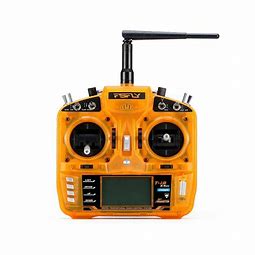Difference between revisions of "Radios"
| Line 10: | Line 10: | ||
*<Strong>Functionality:</Strong> Each robot's requirements are different. A simple wedge robot may only need two channels with a third channel enabling a weapon but some robot designs need even more channels or other radio programming features.<br> | *<Strong>Functionality:</Strong> Each robot's requirements are different. A simple wedge robot may only need two channels with a third channel enabling a weapon but some robot designs need even more channels or other radio programming features.<br> | ||
<br> | <br> | ||
| − | If you are looking to purchase a radio, take a look at the [[ | + | If you are looking to purchase a radio, take a look at the [[Radio List|<strong>list of radios</strong>]] that are known to be suitable for robot combat. |
<Strong>Common problems</Strong><br> | <Strong>Common problems</Strong><br> | ||
| Line 16: | Line 16: | ||
Team Run Amok's <Strong>[http://runamok.tech/AskAaron/radio_guides.html Ask Aaron]</Strong> site is a good resource for additional information and troubleshooting.<br> | Team Run Amok's <Strong>[http://runamok.tech/AskAaron/radio_guides.html Ask Aaron]</Strong> site is a good resource for additional information and troubleshooting.<br> | ||
<br> | <br> | ||
| − | *<strong>Failsafe:<strong><br> | + | *<strong>Failsafe:</strong>What does your receiver do when it loses it's signal? Some inexpensive radio systems will act unpredictably with signal loss while other systems will continue on with their last good signal until they can reconnect. This 'continue' behavior can be useful for some RC systems but can be dangerous for robot combat. Check out the [[Radio List|<strong>radio list</strong>]] for systems that can be set up to failsafe appropriately. If your radio system can't failsafe then most events will not allow it, especially for bots that have active weapons. It's important to remember that often the radio defaults will not work correctly and you will need to adjust them.<br> |
| − | *<strong>Signal Loss:<strong><br> | + | |
| − | *< | + | *<strong>Signal Loss:</strong> <br> |
| − | *< | + | *<strong>Not Binding / Connecting:</strong><br> |
| − | *< | + | *<strong>Compatibility:</strong><br> |
| − | *< | + | *<strong>Too Responsive:</strong><br> |
| − | *< | + | *<strong>Controls Reversed:</strong><br> |
| − | *< | + | *<strong>Only one motor responds:</strong> |
| − | *< | + | *<strong>Robot hums or whines:</strong> |
| + | *<strong>Robot won't stop moving:</strong> | ||
Revision as of 07:12, 2 May 2021
Radios
This page needs to be built.
Choosing a Radio
When choosing a radio there are many things to consider but there are three fundamental things that will drive your choice.
- Safety: Run away robots can be dangerous, so it is important that your radio system properly handles what is known as a Failsafe. A proper failsafe causes all of the robot systems to stop when it's signal cuts out. Many event procedures require that the radio be turned off while people are in the arena to insure that the robot doesn't move. Not all radios have a failsafe feature and some aircraft radios have the feature set to continue the 'last known signal' instead of having everything turn off.
- Form Factor: Most people have a strong preference on the form factor of their radio. There are many different styles but the dual-stick and pistol-grip radios are the most common. Pistol grip radios are typically easier to learn but some people feel they lack the fine control of the dual-stick radios. In the end its usually a personal preference and with enough practice the differences are indistinguishable.
- Functionality: Each robot's requirements are different. A simple wedge robot may only need two channels with a third channel enabling a weapon but some robot designs need even more channels or other radio programming features.
If you are looking to purchase a radio, take a look at the list of radios that are known to be suitable for robot combat.
Common problems
Since the radio sends a signal to the robot's Electronic Speed Controllers to drive the robot's functions, it can sometimes be difficult to determine if the problem is with the radio or the ESC. To make troubleshooting easier, solutions to common problems that affect the whole system are described here.
Team Run Amok's Ask Aaron site is a good resource for additional information and troubleshooting.
- Failsafe:What does your receiver do when it loses it's signal? Some inexpensive radio systems will act unpredictably with signal loss while other systems will continue on with their last good signal until they can reconnect. This 'continue' behavior can be useful for some RC systems but can be dangerous for robot combat. Check out the radio list for systems that can be set up to failsafe appropriately. If your radio system can't failsafe then most events will not allow it, especially for bots that have active weapons. It's important to remember that often the radio defaults will not work correctly and you will need to adjust them.
- Signal Loss:
- Not Binding / Connecting:
- Compatibility:
- Too Responsive:
- Controls Reversed:
- Only one motor responds:
- Robot hums or whines:
- Robot won't stop moving:
Radio Type (stick, pistol, game controller, joystick)
Programming a radio
Radio Mixing
